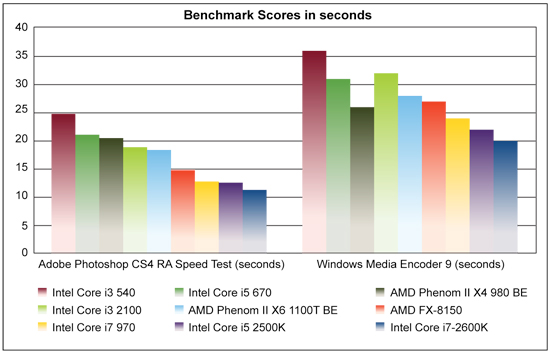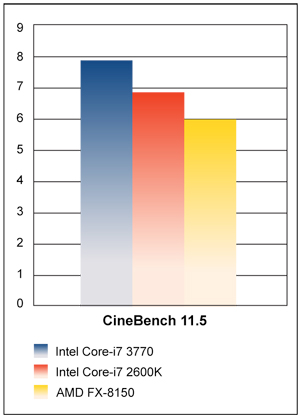Mobile processors also support DDR3L RAM. This is a low-voltage RAM which operates at 1.35V compared to the standard 1.5V. This results in a 15 per cent reduction in power consumption by the RAM itself.
Ivy Bridge was released in April this year. Upgrading to Ivy Bridge would be a straightforward affair since both Ivy and Sandy use the same LGA 1155 socket.
Haswell: The next tock
Haswell is the codename for Intel’s next microarchitecture which forms the next ‘tock’ in Intel’s roadmap. Similar to Ivy Bridge, Haswell is based on the 22nm manufacturing process using tri-gate technology. This processor is not backward-compatible as it uses the LGA1150 socket. Ivy Bridge and Sandy Bridge use the LGA 1155 socket. So to get a Haswell microarchitecture processor working on your computer, you will also need to purchase a motherboard supporting the LGA 1150 socket.
Last year Intel’s president and CEO, Paul Otellini, revealed how advances in silicon technology and platform engineering will reduce idle platform power for the Haswell chip in 2013 by more than 20 times over current technology designs. He also demonstrated a PC with its processor running on solar power.
Intel Haswell processors started showing up for platform verification in mid-January, 2012. Since Ivy Bridge processors had arrived at the same time last year, Haswell could be released in the second quarter of 2013.
Lynx Point, the platform controller hub on the Intel Haswell processors, is also reported to be visibly smaller. This speaks a lot about the on-die integration done by Intel.
Comparison of popular CPUs
Fig. 4 shows performance scores using two speed test tools, the Adobe PS CS4 Retouch Artists and the Windows Media Encoder 9. The Adobe Photoshop CS4 Retouch Artists is a multithreaded test and thus it can utilise all the cores available in the machine. Similarly, the video encoding test also utilises all the cores effectively.

Fig. 4: Performance scores (in seconds) of different processors on two speed tests
This chart shows how different processors perform on two speed tests. The processors compared are Intel’s first-generation Nehalem-based Core-i processors, AMD Bulldozer based Opteron processor and Intel’s second-generation Sandy Bridge based processor. As you can see, the new architecture of the Sandy Bridge processor gives it a significant boost in performance against its older Nehalem competitors. Even the two-billion-transistor Bulldozer processor from AMD struggles to compete.
Fig. 5 utilises Intel’s performance expectation values for the Ivy Bridge processor to create a chart that compares the predicted Ivy Bridge value with known values of the Sandy Bridge and AMD Bulldozer processors.

Fig. 5: Comparison of the predicted Ivy Bridge value with known values of the Sandy Bridge and AMD Bulldozer processors using CineBench 11.5 tool
In a nutshell
Now that you know how the different Intel Core-i series processors stand up to each other and to the AMD Bulldozer microarchitecture, you can decide better what microprocessor to look for in your next gaming rig or high-performance PC. You can also decide whether to go for Ivy Bridge or just a current Sandy Bridge or Bulldozer. Or perhaps, you could think long-term and save up for a Haswell that is due next year.










